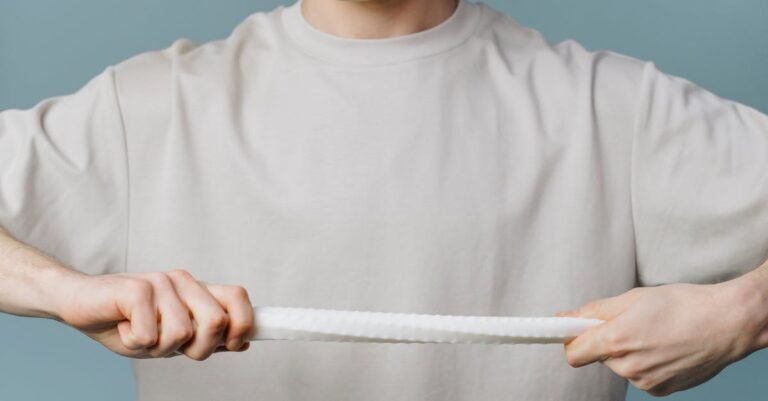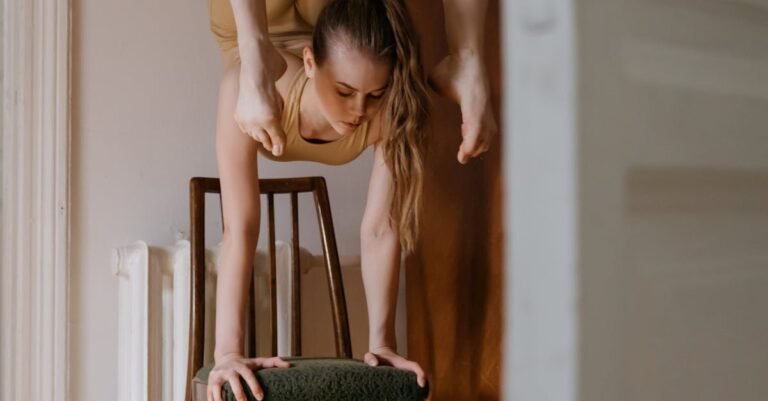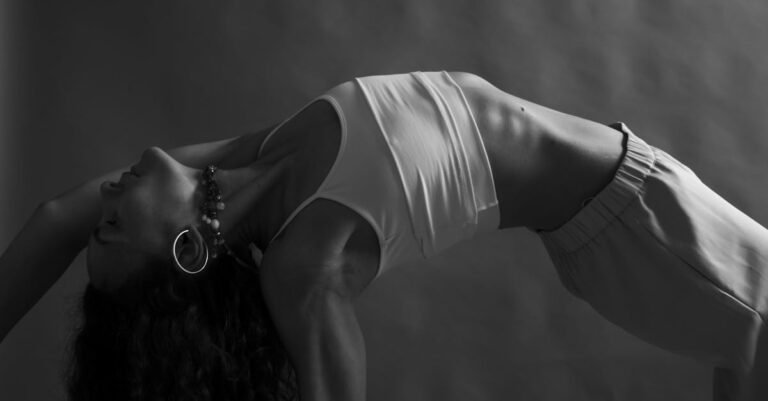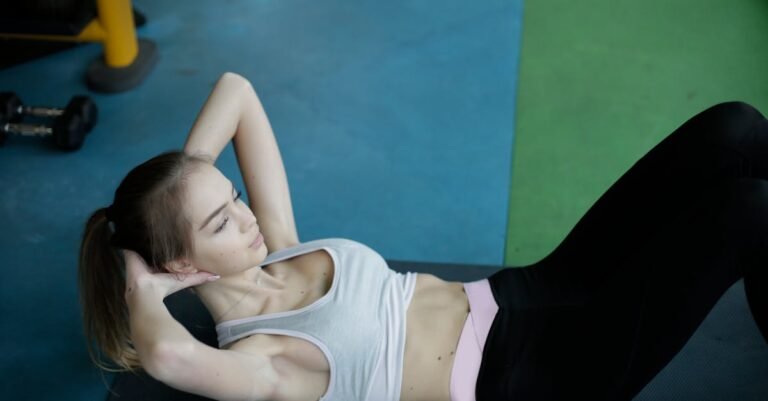Table of Contents
- Finding The Right Workout Shoes: A Guide
- Why Your Shoes Matter More Than You Think
- Before You Shop: Know Your Feet, Know Your Workout
- Decoding Shoe Features: What Really Matters?
- The Shopping Experience: Tips for Success
- Maintaining Your Investment: Shoe Care Tips
- Conclusion: Step Up Your Game
- Frequently Asked Questions (FAQs)
Finding The Right Workout Shoes: A Guide
Okay, let’s talk about something crucial for anyone who moves their body: shoes! You might think, “They’re just shoes, right?” Wrong! Choosing the right workout shoes is like picking the right tool for a job. You wouldn’t use a hammer to screw in a nail, would you? Similarly, wearing the wrong shoes for your workout can range from slightly uncomfortable to downright detrimental, potentially leading to injuries and hindering your progress. Think of your shoes as the foundation upon which your entire workout rests. Get it wrong, and everything built on top feels a bit shaky.
We’ve all been there – lured in by the flashiest colors or the biggest brand name, only to find our feet aching, shins splinting, or worse after a few sessions. It’s confusing! There are countless options, technical jargon flying around, and everyone seems to have a different opinion. This guide is here to cut through the noise. We’re going to break down everything you need to know, step by step, to find that perfect pair that feels like it was made just for you and your specific activities. Ready to step up your shoe game?
Why Your Shoes Matter More Than You Think
It’s easy to underestimate the power packed into those things you lace up before hitting the gym or the pavement. But trust me, the impact (pun intended!) of your footwear choice is massive. It goes way beyond just aesthetics or comfort, although those are important too!
The Foundation of Your Fitness
Picture this: you’re building a house. Would you skimp on the foundation? Of course not! A weak foundation compromises the entire structure. Your feet and your shoes are the foundation for every squat, lunge, jump, or stride you take. They are the first point of contact with the ground, absorbing shock, providing stability, and transferring energy.
The right shoe supports your foot’s natural mechanics, allowing you to move efficiently and powerfully. It helps align your body from the ground up – feet, ankles, knees, hips, and even your back. When your shoes aren’t doing their job correctly, it creates a chain reaction of misalignment and stress that can travel right up your body. Conversely, the right shoe acts as a stable, supportive base, enabling better form, enhanced performance, and a more effective workout overall. It’s about building your fitness on solid ground.
Injury Prevention: More Than Just Cushioning
Many people think “injury prevention” in shoes just means lots of soft cushioning. While cushioning plays a role in shock absorption, especially for high impact activities, it’s only one piece of the puzzle. Preventing injuries is more nuanced than just strapping pillows to your feet.
The wrong type of shoe, or a shoe that doesn’t match your foot mechanics or activity, can actively cause problems. Shoes that are too stiff or too flexible in the wrong places, shoes that don’t offer adequate support for your foot type, or shoes that are simply worn out can contribute to issues like:
- Plantar fasciitis (that awful heel pain)
- Shin splints
- Achilles tendonitis
- Stress fractures
- Knee pain
- Hip and back problems
Proper footwear addresses factors like stability (keeping your foot from rolling too much), motion control (guiding your foot through its stride), flexibility (allowing natural foot movement where needed), and traction (preventing slips). It’s about providing the right kind of support and control for your feet during your specific activities. Think of it less like a generic cushion and more like a personalized support system designed to keep your unique structure safe and sound.
Before You Shop: Know Your Feet, Know Your Workout
Alright, before you even think about browsing online or hitting the stores, you need to do a little homework. Knowing your own feet and the demands of your chosen activities is paramount. Buying shoes without this knowledge is like navigating without a map – you might eventually get somewhere, but it’s likely to be a frustrating and potentially painful journey.
Understanding Your Foot Type
Our feet are incredibly complex and unique structures. Two key factors determine how your foot interacts with the ground and, consequently, what kind of support you need: pronation and arch type.
Pronation Explained (Neutral, Overpronation, Supination)
Pronation isn’t a bad word! It’s the natural inward roll of your foot as it transitions from heel strike to toe off during walking or running. It’s your body’s way of absorbing shock. Problems arise when you pronate too much (overpronation) or too little (supination/underpronation).
- Neutral Pronation: This is the ideal. Your foot rolls inward a normal amount (about 15%), distributing impact evenly and efficiently pushing off from the front of the foot. You’ll typically see even wear on the bottom of your old shoes. If this is you, lucky you! You have the widest range of shoe choices, often labeled as “neutral” or “cushioned.”
- Overpronation: Your foot rolls inward excessively (more than 15%). This often happens with flatter feet. The ankle collapses inward, putting extra stress on the inside edge of the foot, ankle, shin, and knee. Shoe wear patterns often show excessive wear on the inside edge, especially near the big toe. People who overpronate usually benefit from “stability” or “motion control” shoes designed to limit excessive inward rolling.
- Supination (Underpronation): Your foot doesn’t roll inward enough, or may even roll outwards. The impact is concentrated on the outer edge of the foot. This is often associated with high arches. Shoe wear patterns typically show excessive wear on the outer edge. If you supinate, you generally need well cushioned, flexible shoes (“neutral” or specifically cushioned models) to encourage a more natural inward roll and absorb shock, as your foot isn’t doing it effectively on its own.
How to check? Look at the wear pattern on an old pair of running or walking shoes. Another common method is the “wet test”: wet the bottom of your foot and step onto a piece of cardboard or dark paper. The imprint shape can give you clues (more on this with arch types).
Arch Types (High, Neutral, Flat)
Your arch is the curved area on the sole of your foot between your heel and the ball. It helps absorb shock and stabilize movement. Arch height often correlates with pronation patterns.
- Neutral (Medium) Arches: Often associated with neutral pronation. The wet test shows a distinct curve along the inside, with about half the arch area filled in. These feet are generally biomechanically efficient and need shoes that offer a good balance of cushioning and support.
- Flat Arches (Low Arches): The arch collapses, often leading to overpronation. The wet test shows an imprint that looks like the whole sole of the foot. Flat feet need shoes with good stability or motion control features to support the arch and prevent excessive inward rolling.
- High Arches: The arch is pronounced and sits high off the ground. This often leads to supination (underpronation) because the foot doesn’t roll inward enough to absorb shock effectively. The wet test shows a very narrow band or possibly even a gap connecting the heel and the ball of the foot. High arched feet typically need neutral shoes with plenty of cushioning to compensate for the lack of natural shock absorption.
Knowing both your pronation pattern and arch type gives you a powerful starting point for narrowing down shoe categories.
What’s Your Workout Style?
Just as feet differ, so do workouts! The demands placed on your shoes during a long run are vastly different from those during a heavy lifting session or a fast paced HIIT class. Using the wrong shoe for the activity is asking for trouble.
Running Shoes vs. Training Shoes
This is a common point of confusion. Can’t I just use my running shoes for everything? Well, you can, but it’s not ideal.
- Running Shoes: Designed for repetitive, forward motion (heel to toe). They typically have significant cushioning, especially in the heel, to absorb impact over miles. They often have a higher heel drop (the difference in height between the heel and forefoot) to facilitate forward momentum. They are generally more flexible through the forefoot for a smooth toe off but might lack side to side stability.
- Training Shoes (Cross Trainers): Designed for multi directional movement, stability, and durability. They offer support for lateral (side to side) movements common in classes, agility drills, and some weightlifting. They usually have less cushioning than running shoes and a lower, flatter profile (lower heel drop) to keep you stable and closer to the ground, which is important for lifting weights or doing exercises like squats and lunges. The outsole often features specific patterns for grip during various movements.
Using running shoes for activities with lots of lateral movement can lead to instability and potential ankle rolls. Using training shoes for long distance running might lack the necessary cushioning and shock absorption, leading to discomfort or injury.
Specific Needs for Weightlifting, HIIT, etc.
Let’s get even more specific:
- Weightlifting: Serious lifters often prefer specialized weightlifting shoes. These have a very hard, flat, incompressible sole (often with a raised heel made of wood or hard plastic). This provides maximum stability and ground connection for transferring force during heavy lifts like squats and deadlifts. A cross trainer can work for general strength training, but dedicated lifters benefit from specific shoes.
- HIIT (High Intensity Interval Training) & Classes: These workouts involve a mix of movements – jumping, burpees, short sprints, agility drills, light lifting. You need a shoe that’s a versatile all rounder. Look for a good training shoe with moderate cushioning (enough for impact but not too squishy), excellent lateral support, good grip, and some flexibility.
- Court Sports (Basketball, Tennis): These require shoes designed for quick cuts, pivots, jumps, and landings. They offer high levels of ankle support (often higher tops) and durable outsoles specifically designed for court surfaces.
- Walking: Walking shoes prioritize comfort, stability, and smooth transitions. They generally need less cushioning than running shoes but good flexibility through the ball of the foot.
Be honest about what you’ll actually be doing most often in these shoes. If you primarily run, get running shoes. If you mostly do gym classes and strength training, get training shoes. If you do a bit of everything, a good cross trainer might be your best bet, but recognize it won’t be perfect for any single activity.
Decoding Shoe Features: What Really Matters?
Okay, you know your feet and your activities. Now you’re faced with a wall of shoes, each boasting different technologies and features. What should you actually focus on? Let’s break down the key components:
Cushioning: Finding the Sweet Spot
Cushioning refers to the material in the midsole (the layer between the upper part of the shoe and the outsole) designed to absorb shock and provide comfort. It’s usually made of foam (like EVA or TPU) or gel/air units. More isn’t always better!
- Too much cushioning: Can feel unstable, especially for lifting or lateral movements. It can sometimes mask feedback from the ground. Think trying to balance on a marshmallow.
- Too little cushioning: Might not provide enough shock absorption for high impact activities like running, potentially leading to stress related injuries.
The right amount depends on your activity, body weight, and personal preference. Runners often prefer more cushioning than someone doing HIIT. Heavier individuals might need more substantial cushioning. Try different levels to see what feels best – protective but not mushy.
Stability vs. Motion Control
These terms relate to how much the shoe helps control excessive foot motion, primarily overpronation.
- Stability Shoes: Offer gentle guidance for mild to moderate overpronation. They often use features like denser foam on the medial (inner) side of the midsole (called a medial post) or guide rails along the sides to help keep the foot aligned without being overly rigid.
- Motion Control Shoes: Provide maximum support for severe overpronation or very flat feet. They are typically firmer, less flexible, and have more aggressive features (like larger medial posts or wider bases) to strongly limit inward rolling.
- Neutral Shoes: Offer no specific pronation control features. They are best for neutral pronators or supinators, allowing the foot to move naturally while providing cushioning.
Don’t choose stability or motion control shoes unless you genuinely overpronate. Using them unnecessarily can interfere with your natural gait and potentially cause discomfort or injury elsewhere.
The Upper: Breathability and Support
The upper is everything that covers the top and sides of your foot. Key considerations are:
- Material: Mesh uppers are common for running and training shoes, offering excellent breathability to keep feet cool and dry. Knit uppers provide a sock like fit and flexibility. Leather or synthetic leather offers more durability and support, often seen in court shoes or some training shoes.
- Fit and Structure: Look for a snug but comfortable fit through the midfoot and heel to prevent slipping. Overlays (strips of synthetic material) or internal bands can add structure and support, particularly important for lateral movements in training shoes. The toe box should be roomy enough for your toes to splay naturally, especially during running or lifting.
Outsole Grip and Durability
The outsole is the bottom layer that contacts the ground. Its job is traction and durability.
- Material: Usually made of rubber (carbon rubber for durability, blown rubber for cushioning and grip).
- Tread Pattern: Running shoes often have patterns designed for forward motion grip. Training shoes have more varied patterns, often flatter with specific zones for grip during pivots, jumps, and rope climbs. Trail running shoes have aggressive lugs for traction on uneven terrain.
- Flex Grooves: Grooves cut into the outsole (especially in the forefoot) allow the shoe to bend naturally with your foot.
Consider the surfaces you’ll be on. Gym floors require different traction than pavement or trails.
The Shopping Experience: Tips for Success
Armed with knowledge, it’s time to find your perfect pair. How you shop can make a big difference.
When and How to Shop
- Shop Later in the Day: Your feet naturally swell throughout the day and after exercise. Shopping later ensures you get a size that won’t feel too tight when your feet are at their largest.
- Wear Your Workout Socks: Bring the type of socks you’ll actually wear during your workouts. Different sock thicknesses can significantly alter shoe fit.
- Consider Specialty Stores: While big box stores offer variety, specialty running or athletic footwear stores often have staff with more in depth knowledge. They can analyze your gait, measure your feet properly, and make informed recommendations based on your needs. Don’t be afraid to ask questions!
- Bring Your Old Shoes: If you have them, bring your current workout shoes. Experienced staff can look at the wear patterns to get clues about your gait and pronation.
- Know Your Budget, But Be Realistic: Good workout shoes are an investment in your health. While you don’t necessarily need the most expensive pair, be prepared to spend a reasonable amount for quality construction and appropriate features. Extremely cheap shoes often lack durability and proper support.
Trying Them On: The Crucial Step
Never buy workout shoes without trying them on properly. Fit is everything!
- Measure Both Feet: Most people have one foot slightly larger than the other. Always fit the shoe to your larger foot.
- Check the Length: There should be about a thumb’s width of space between your longest toe and the end of the shoe. Your toes shouldn’t be jammed against the front.
- Check the Width: The shoe should feel snug around the midfoot and heel (no slipping) but allow your toes to wiggle and spread comfortably in the toe box. It shouldn’t feel tight or pinch anywhere.
- Walk Around: Don’t just stand there! Walk briskly around the store. Does anything rub or feel uncomfortable? Does your heel slip?
- Mimic Your Workout: If possible, do a few movements similar to your workout. Jog in place, do a few lunges or side shuffles (carefully!). How does the shoe feel during these movements? Does it provide the stability you need? Is the cushioning comfortable? Does it flex where your foot flexes?
- Compare Pairs: Try on several different models and brands, even if you have a favorite. Different brands fit differently, and models change year to year. Compare how each one feels.
- Trust Your Gut: While technology and expert advice are helpful, ultimately, the shoe needs to feel comfortable to you. If something feels off, even if it’s technically the “right” shoe for your foot type, it’s probably not the right shoe for you. Comfort is key!
Maintaining Your Investment: Shoe Care Tips
You’ve found the perfect pair! Now, how do you make them last and ensure they keep performing their best?
- Use Them Only for Workouts: Resist the urge to wear your fancy workout shoes for running errands or everyday activities. This preserves their cushioning and structure for when you actually need them.
- Air Them Out: After each workout, loosen the laces, pull out the insoles (if removable), and let your shoes air dry completely. Stuffing them in a gym bag while damp encourages bacteria and odor. Avoid direct heat sources like radiators, which can damage the materials.
- Clean Them Properly: Don’t throw them in the washing machine or dryer! This can break down the glues and foams. Use a soft brush, mild soap, and cold water to spot clean the uppers and midsoles. Clean mud off the outsoles.
- Know When to Replace Them: Workout shoes don’t last forever! The cushioning breaks down over time, even if the outside still looks okay. As a general rule, running shoes last between 300 500 miles. For training shoes used 3 4 times a week, consider replacing them every 6 12 months. Pay attention to how they feel – if the cushioning feels flat, the support seems diminished, or you start experiencing new aches and pains, it’s likely time for a new pair. Look for visible signs of wear like creased midsoles or worn down outsoles.
Conclusion: Step Up Your Game
Whew! That was a deep dive, wasn’t it? Finding the right workout shoes isn’t just about grabbing the coolest looking pair off the shelf. It’s an investment in your comfort, performance, and most importantly, your injury prevention. By understanding your unique feet – your arches and pronation – and matching that knowledge with the specific demands of your chosen activities, you empower yourself to make an informed decision.
Remember to pay attention to key features like cushioning, stability, upper material, and outsole grip, but don’t get lost in the marketing hype. The most crucial step is trying them on properly, ensuring a comfortable and secure fit that feels right for you. Take your time during the shopping process, don’t be afraid to ask for expert help, and once you’ve found your perfect match, take good care of them.
Your shoes are your connection to the ground, the foundation for every move you make. Choosing wisely means you can focus on crushing your goals, feeling great, and staying injury free. So go forth, use this knowledge, and step confidently into your next workout with the perfect pair supporting you every step of the way!
Frequently Asked Questions (FAQs)
1. Can I use the same pair of shoes for running and gym workouts?
It’s generally not recommended for optimal performance and injury prevention. Running shoes are designed for forward motion and high impact cushioning, while gym/training shoes prioritize multi directional stability, lower profile, and durability for varied movements like lifting, jumping, and lateral shuffles. Using one for the other compromises support and can wear the shoe out improperly. If you do both regularly, investing in separate pairs is best.
2. How do I know if my shoes are worn out and need replacing?
Don’t just rely on visible appearance. Key signs include: the cushioning feels flat or less responsive; you notice new aches or pains (shins, knees, feet) after workouts; the outsole tread is significantly worn down in areas; the midsole foam looks compressed or has deep creases; the upper is losing its supportive structure; or, for runners, you’ve exceeded the typical mileage (300 500 miles).
3. Is it worth getting my gait analyzed at a specialty store?
Yes, especially if you’re a runner or experiencing foot related discomfort. A gait analysis (often involving watching you walk or run on a treadmill) can help identify your pronation pattern and foot strike much more accurately than just looking at shoe wear or doing a wet test. This expert insight can guide you towards the most appropriate shoe category (neutral, stability, motion control).
4. What does “heel drop” mean, and why does it matter?
Heel drop (or offset) is the difference in height between the heel and the forefoot cushioning. Traditional running shoes often have a higher drop (8 12mm) to promote a heel strike and forward roll. Training shoes and minimalist shoes tend to have a lower drop (0 6mm) to encourage a more midfoot strike and provide greater stability by keeping you closer to the ground, which is beneficial for lifting and agility.
5. Do I really need special weightlifting shoes just for lifting weights at the gym?
For general strength training involving machines and moderate free weights, a good pair of flat soled training shoes will likely suffice. However, if you’re serious about Olympic lifting (snatches, clean and jerks) or heavy powerlifting (squats, deadlifts), dedicated weightlifting shoes offer significant advantages. Their hard, incompressible soles and often elevated heels provide superior stability, better force transfer, and can improve positioning (like squat depth) which standard trainers or running shoes cannot match.










